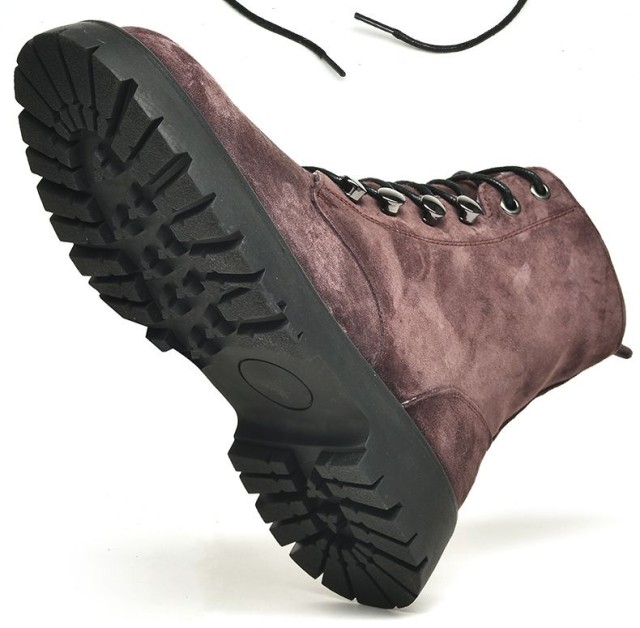When selecting safety footwear, workers and procurement managers face a critical decision: stick with traditional steel toes or embrace modern composite alternatives. This guide examines historical context, material trade-offs, industry preferences, and emerging innovations to help you make informed decisions tailored to your operational needs.
The Historical Legacy of Steel Toes
Post-WWII Safety Revolution and Standardization
Steel toe boots became industrial staples after World War II, when manufacturing and construction sectors demanded reliable foot protection. The standardization of safety protocols cemented steel's dominance, as its high impact resistance met emerging workplace safety regulations.
Cost Efficiency in Large-Scale Industrial Adoption
Early adoption was driven by steel's affordability at scale. For factories producing thousands of boots annually, steel provided:
- Predictable manufacturing processes
- Easy compliance with early safety standards
- Lower per-unit costs compared to nascent composite materials
Steel vs. Modern Alternatives: A Practical Comparison
Weight and Durability: Steel vs. Composite Materials
Research shows composite toes weigh approximately 30% less than steel, reducing leg fatigue during 10+ hour shifts. However, steel maintains advantages in:
- Extreme compression resistance (meeting ASTM F2413-18 requirements)
- Long-term structural integrity in high-abrasion environments
Safety Standards Compliance: ASTM Requirements Across Materials
Both materials meet ASTM F2413-18 standards for impact and compression resistance, but key differences emerge in specialized scenarios:
| Factor | Steel Toe | Composite Toe |
|---|---|---|
| Electrical Hazard | Conducts electricity | Non-conductive |
| Thermal Transfer | Conducts heat/cold | Insulates |
| Metal Detectors | Triggers alarms | Undetectable |
Industry Acceptance and Its Impact
Why Construction and Manufacturing Still Favor Steel
Heavy industries continue preferring steel toes due to:
- Unmatched durability against crushing hazards
- Lower upfront costs for high-turnover workforces
- Worker familiarity with traditional designs
Niche Sectors Adopting Alternatives: Case Studies
Composite materials gain traction in:
- Electrical work: Non-conductive properties prevent shocks
- Cold storage: Thermal insulation maintains foot warmth
- Airport security: Avoids metal detector disruptions
Future Trends in Safety Footwear
Innovations Challenging Steel’s Dominance
Emerging materials like carbon fiber and advanced polymers offer:
- Comparable protection at reduced weights
- Enhanced flexibility for dynamic movements
- Improved temperature regulation
Balancing Cost, Safety, and Worker Preferences
The ideal choice depends on:
- Risk profile: Steel for extreme impact, composites for electrical/thermal risks
- Comfort needs: Composite for all-day wear, steel for short-duration heavy tasks
- Budget considerations: Steel's lower initial cost vs. composites' long-term ergonomic benefits
Make the Smart Safety Choice with 3515
Whether you're equipping a construction crew or sourcing footwear for specialized trades, 3515 delivers safety solutions combining proven protection with modern comfort. Our range meets every ASTM standard while addressing real-world workplace demands—from steel toes that withstand industrial punishment to lightweight composites for agile professionals.
Ready to optimize your safety footwear program? Contact 3515 today for bulk purchasing options tailored to your industry's unique hazards and workforce needs.
Products You Might Be Looking For:
View industrial-grade steel toe work boots
Explore athletic-style safety shoes with steel toes
Browse customizable steel toe safety footwear
Related Products
- Wholesale Customizable Suede Safety Boots - Puncture-Proof with Velcro Closure
- Puncture-Resistant Velcro Safety Boots for Wholesale & Custom Manufacturing
- Customizable Anti-Smash Safety Boots for Wholesale & Private Label Manufacturing
- Wholesale Durable Breathable Safety Boots Custom OEM Manufacturer
- Wholesale Durable Safety Boots | Custom Steel Toe & Puncture-Resistant Manufacturing
Related Articles
- Steel Toe Work Boots: Balancing Safety and Comfort for Demanding Jobs
- How to Choose Work Boots That Match Your Industry's Safety Needs
- How to Choose Work Boot Materials for Maximum Safety and Durability
- How Safety Work Boots Engineer Protection: Features and Standards for Targeted Hazard Mitigation
- How to Choose Work Boots That Balance Safety, Comfort, and Durability for Your Job



















